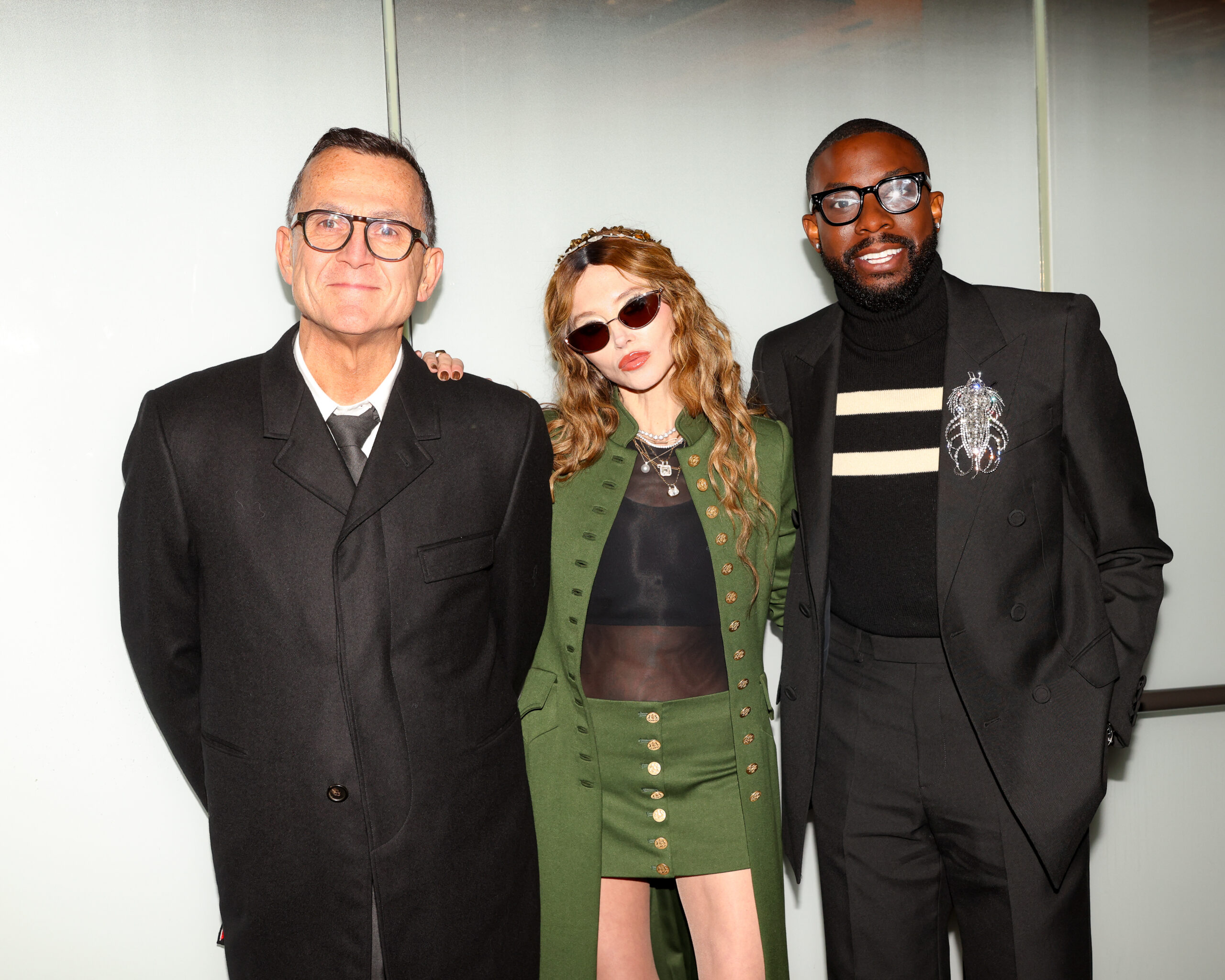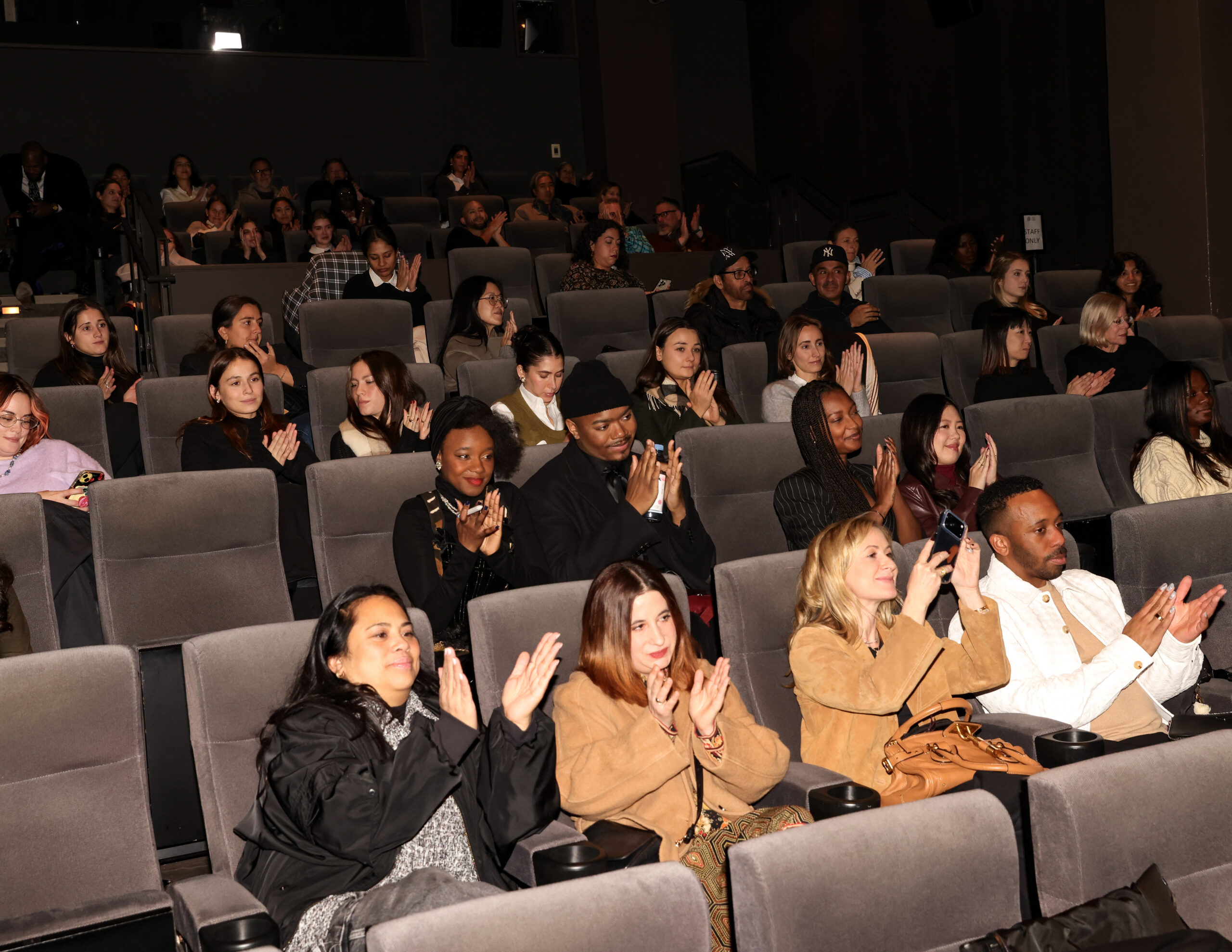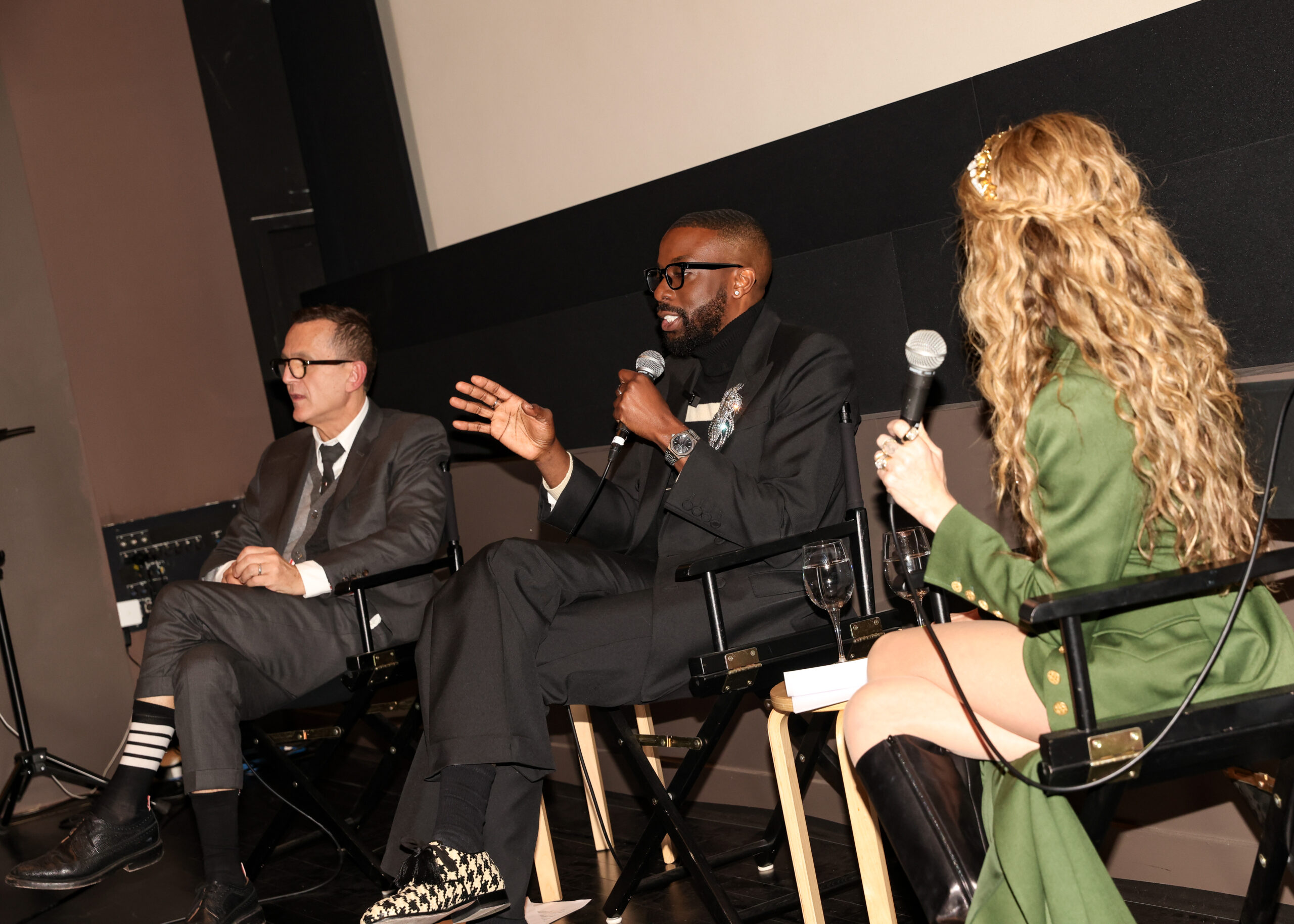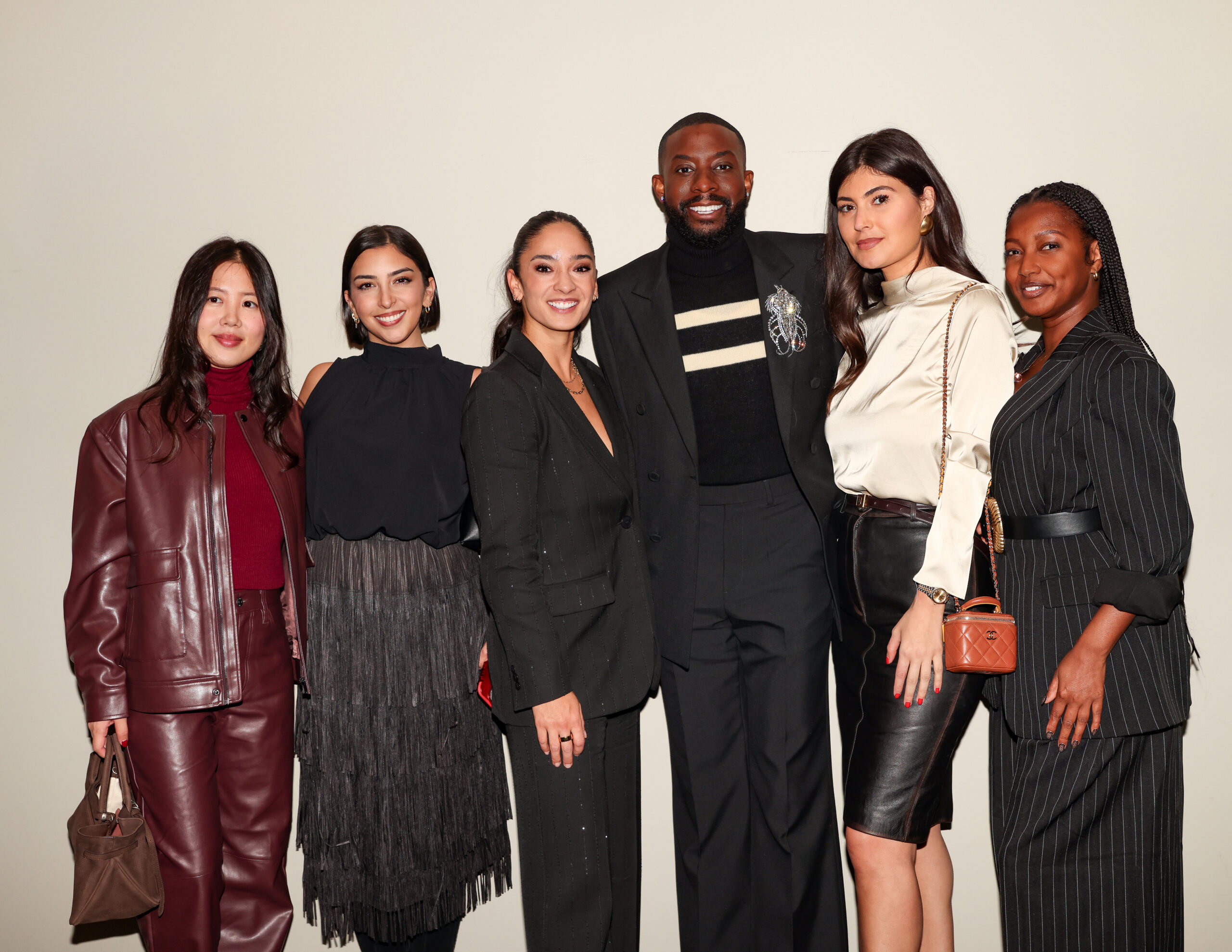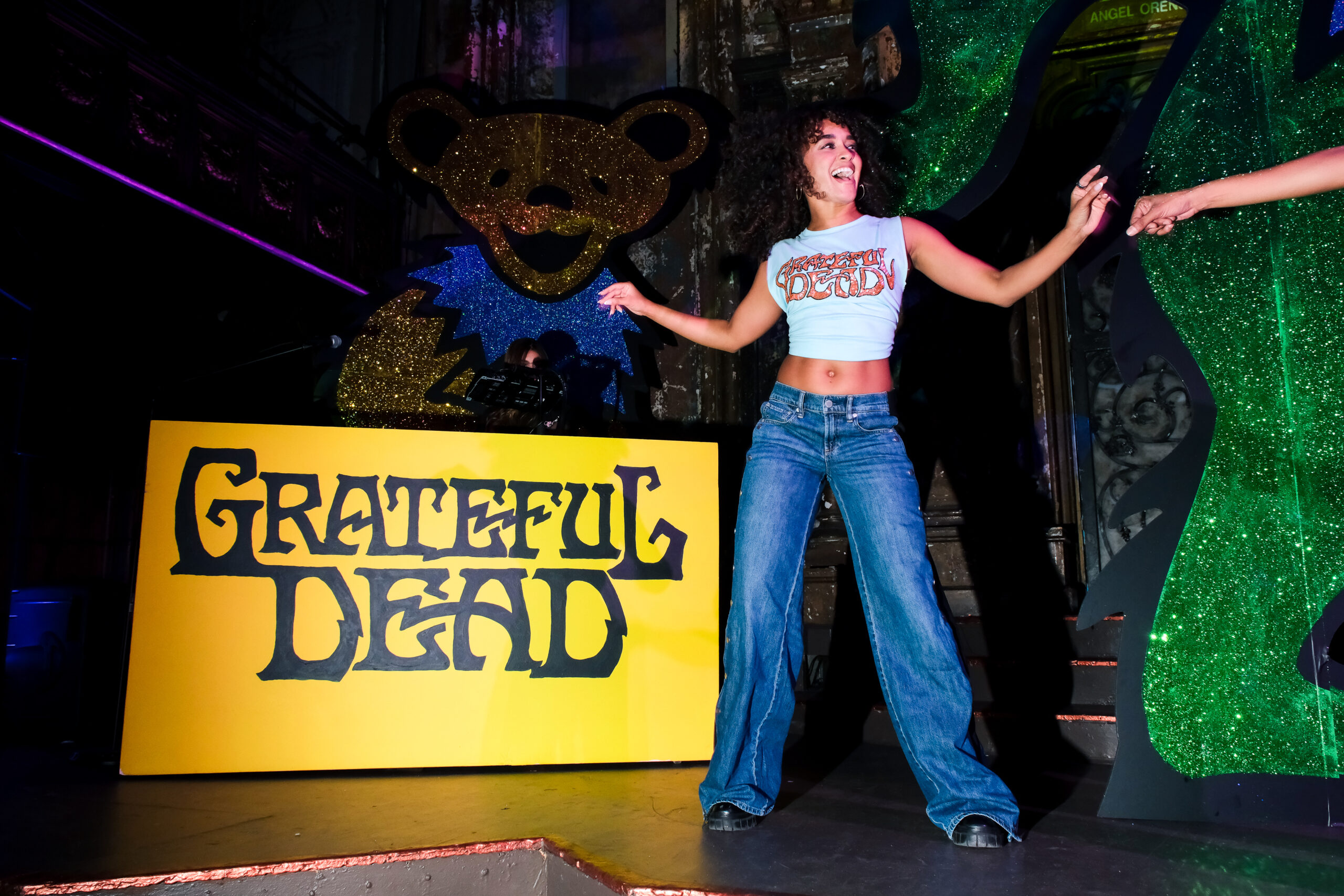Fashion and tech-savvy creatives gathered on Tuesday at Lincoln Center’s Howard Gilman Theatre for “The Future is Now: How AI is Redefining the Shopping Experience,” a CFDA x SpreeAI conversation that explored how artificial intelligence is reshaping the fashion landscape.
Moderated by CFDA CEO and President Steven Kolb, the discussion featured John Imah, CEO and Co-founder of SpreeAI, and Stacey Bendet Eisner, Founder and Creative Director of Alice + Olivia. Together, they unpacked how brands and retailers can leverage AI not as a replacement for creativity, but as a resourceful extension of it, bridging the gap between luxury’s traditional craftsmanship and technology’s forward momentum.
The perennial question – “Will technology take people’s jobs?” – resurfaced. The short answer is no. AI is a tool that depends on human intelligence, emotion, and integrity to ensure that messages are accurate, meaningful, and true to a brand’s DNA.
SpreeAI’s technology, for example, allows customers to try on products in real time, a breakthrough addressing major pain points in e-commerce, retail productivity, and personalization. But as Imah and Bendet emphasized, without emotional connection, authenticity, and empathy, AI alone risks producing mediocrity. The human touch remains irreplaceable.
The conversation reinforced that technology, when guided by creativity, has the power to elevate the customer experience. It merges data and imagination to make storytelling faster, more strategic, and more inspiring, positioning brands not just as sellers of fashion, but as visionaries shaping the future.
Here, some highlights of the conversation.
Steven Kolb: When you hear the phrase “The Future is Now,” what does that mean for you in the context of fashion and AI?
Stacey Bendet Eisner: I want to start by acknowledging that people in our industry can feel intimidated by AI. Even for me, it can feel overwhelming. So let’s take a step back and define it. Artificial intelligence is the simulation of human intelligence in machines, enabling them to perform tasks that typically require human thought, learning, problem-solving, decision-making, and understanding language. I think it’s important to start there, so no one feels embarrassed to ask questions today. Then we can talk about the future.
John Imah: When I think about the future, specifically in fashion, it’s about making everything seamless and easy. AI should be additive to what you’re already doing: ask how AI can come in and make it better. Tech sometimes gets a bad stigma, often not intentionally, especially at scale, like with data issues. What’s so interesting about AI is the speed and velocity at which it learns. For fashion, you have to respect the art and culture of the field while applying technology to make what you do easier.
S.B.E: As a designer, AI feels like a creative revolution. It lets us design faster and dream bigger, creating pieces that once required time and heavy resources. Recently, I designed jewelry and even hand sanitizer bottles in ChatGPT, just prompting and refining. At Alice + Olivia, we launched Thursdays.ai, a weekly hour where every team explores how AI can boost efficiency, operations, and creativity, from using Sora for social to Firefly for image-to-video. AI isn’t the future, it’s now.
S.K.: On the jewelry you were designing, what’s the first step? What are you inputting to get to the design?
S.B.E: Normally you’d CAD something in Photoshop or Illustrator for hours. Instead, I’ll type: “I love gypsy rings, show me a gypsy ring;” rthen, “Make it more round,” then adjust the metal finish, shape, curvature around the diamond, etc. With ChatGPT or Gemini, the model gets to know you as you iterate, text in, visual out. I’ve designed rugs, rings, necklaces, rapid back-and-forth until it matches the vision in my head.
J.I.: That’s the “early days” of AI. You have to know what you want to get what you need. Think of CGI in old movies that once looked amazing; now it feels primitive. The models you’re using today are likely the dumbest models we’ll see in our lifetimes. In six to 12 months, they’ll be much smarter and more anticipatory.
S.B.E: Totally. Photo-to-video now versus six months ago, insane progress, whether Midjourney, Firefly, or others. Things that felt Jetsons-level a year ago are heading mainstream.
S.K.: Designers tell me AI is harder to use creatively than for commerce or social content. Is that true? When does it change?
S.B.E: There’s definitely an overload of tools right now. We experimented for months before landing on Leonardo. It allows high-detail, CAD-style outputs and photoreal embroidery, so you can visualize a garment before patterning.
J.I.: That’s the problem we saw: too many tools, too little clarity. That’s why we built SpreeAI, a fashion-first, not tech-only, solution designed to help brands personalize and visualize while staying authentic to their own aesthetics.
S.K.: How do you respond to the stigma that using AI is ”cheating?”
S.B.E: I worried about that at first, especially with the copy. But AI enhances creativity, it doesn’t replace it. You’re still designing, still editing, still curating. It’s not drawing by hand, but it’s just as creative because of what you can explore and refine.
J.I.: Authenticity comes from personalization and involvement. If you copy-paste outputs with no input, sure, that’s questionable. But if AI is additive to your writing, designing, or process, it’s doing its job: speed, quality, and efficiency.
S.K.: Let’s talk about SpreeAI, personalized, AI-driven shopping. What does that mean and what consumer shifts are you seeing?
J.I.: SpreeAI is a white-label platform brands integrate directly into their sites, apps, and in-store experiences. On a product page, you’ll see a “Try On” button, upload a photo or use a model, add height and weight, and instantly see photorealistic try-ons in multiple poses. It predicts size with about 99 percentpercent accuracy based on brand tech packs. We focus on two pain points: returns and conversion. Around 60 percent of users who click “Try On” convert to a sale. Beyond that, it helps brands understand fit preferences, looser versus tailored, before production.
S.B.E: What excites me is how this reimagines the customer journey. Fashion websites have looked the same for 20 years; SpreeAI changes not just visuals, but the feeling. It’s immersive, interactive, modern.
J.I.: Exactly. Change can trigger fear, so we lead with creativity. When we pitch to brands, we show up in their clothes, bring models, and create a live mini-runway so they feel the technology in action.
S.K.: Is there anything you fear AI will take from fashion?
S.B.E: I’m optimistic. Jobs will evolve more than they’ll disappear. Tasks that once took three people may now take one curator. But curation, opinion, and final judgment will always remain human. My advice to young creatives: become AI-literate. The future belongs to those who blend artistry with innovation.
J.I.: I tell students the same thing. Don’t fear it, learn it. AI is moving daily and knowing how to use creative tools only increases your value. Continuous learning will keep you relevant.
